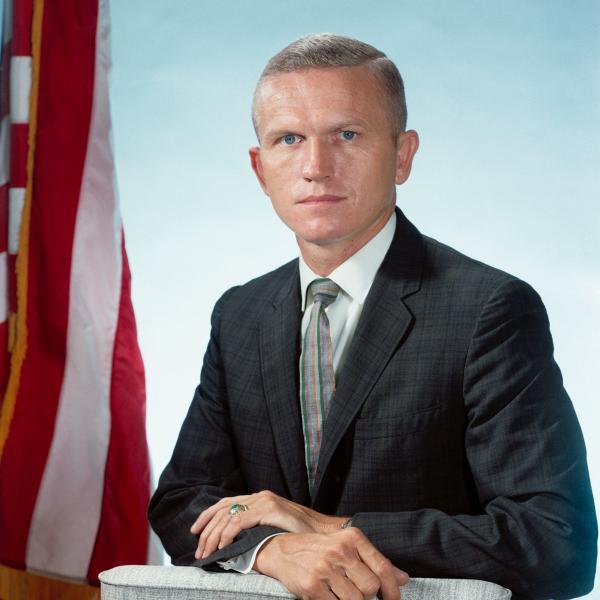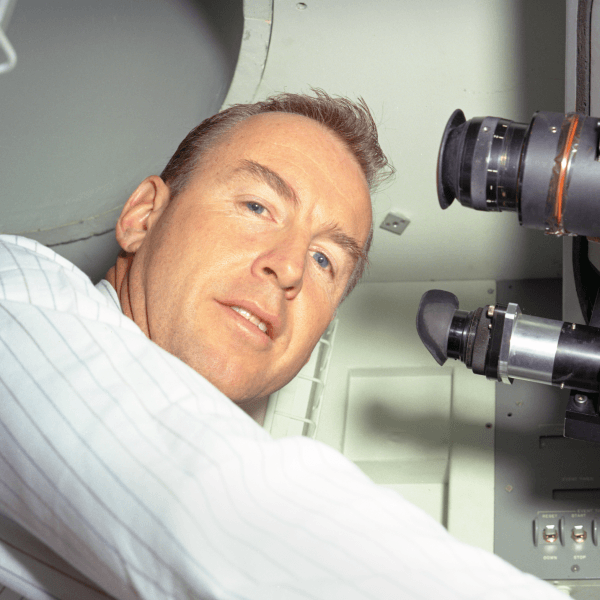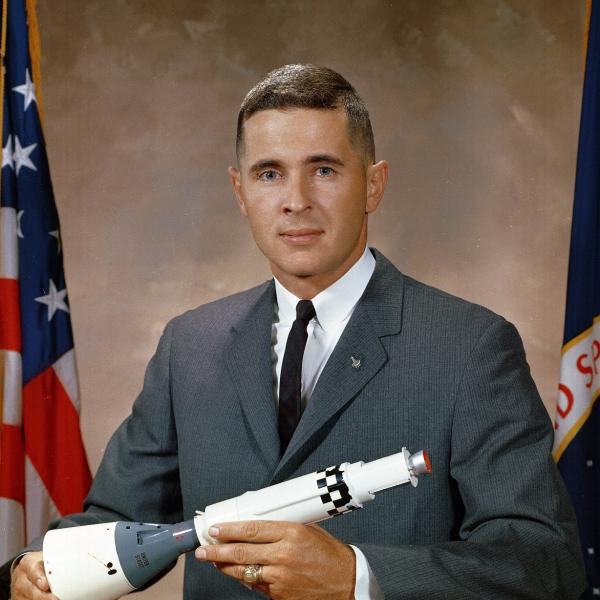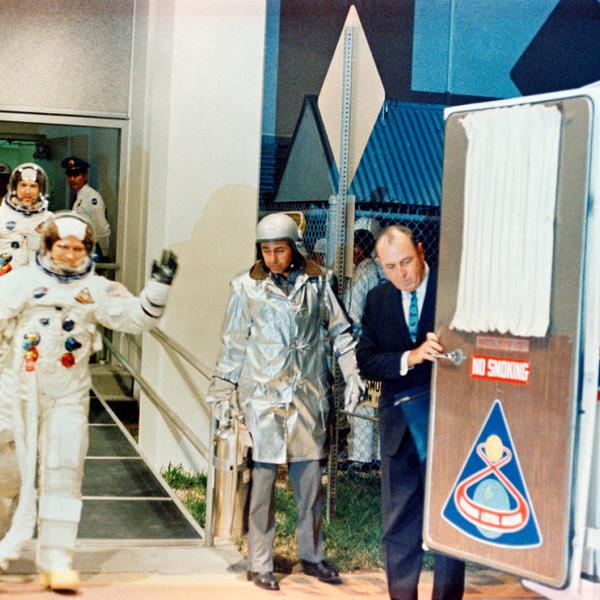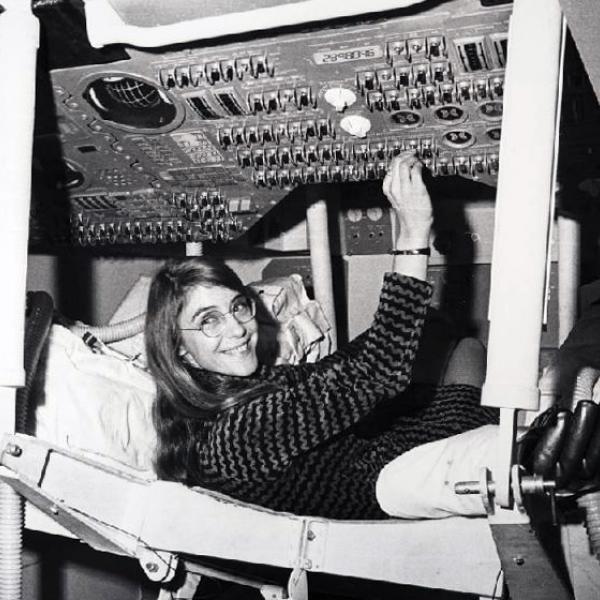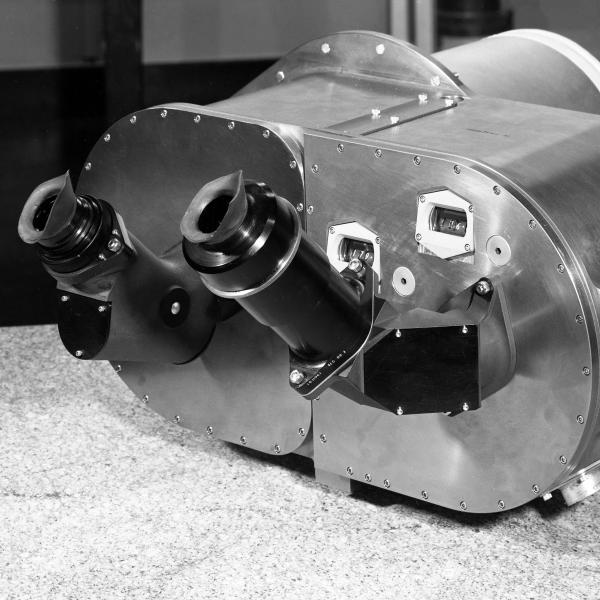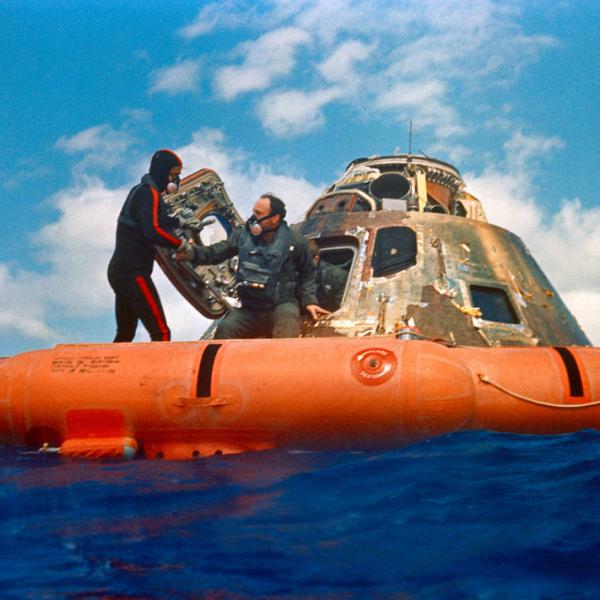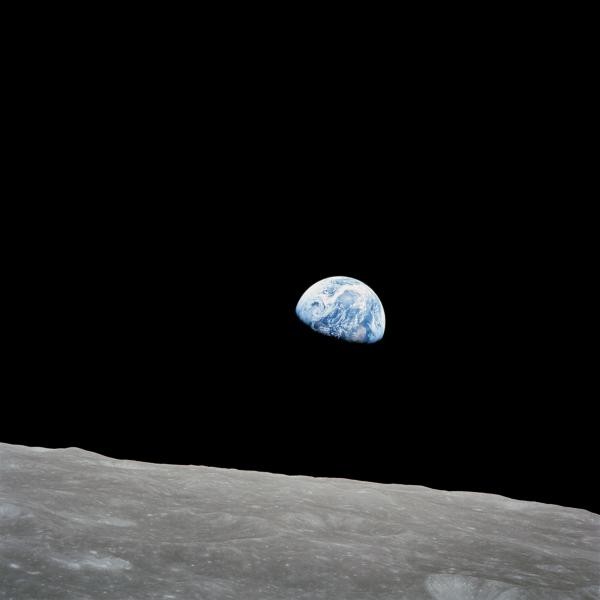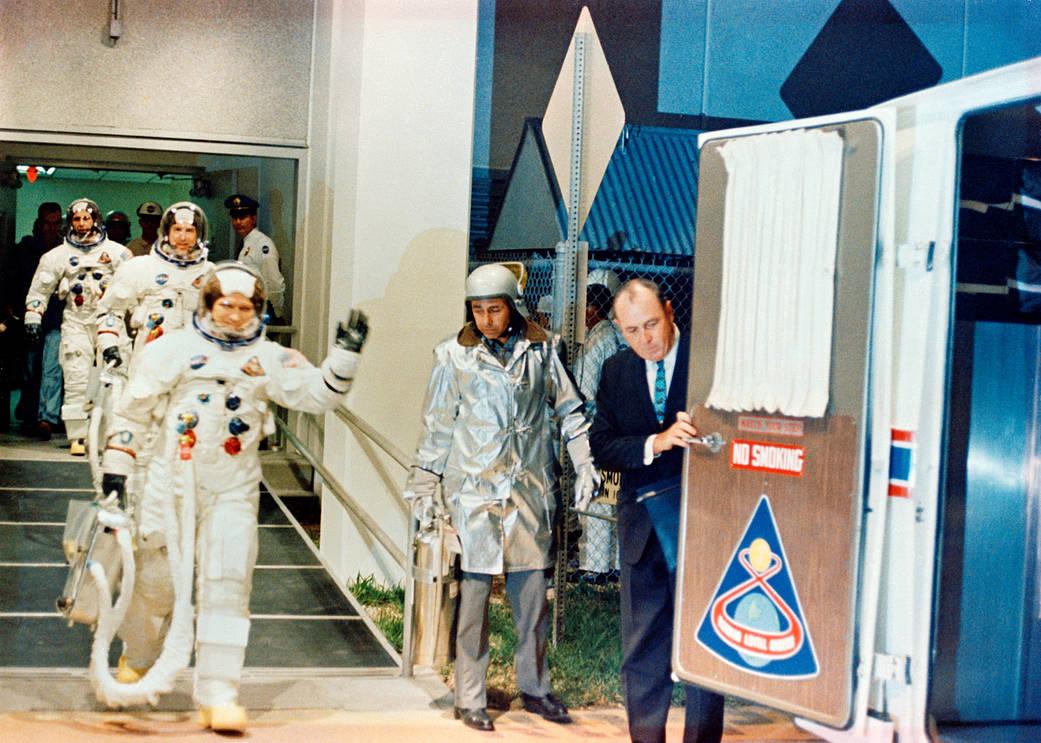
Apollo 8
Apollo 11 was not the first moon mission. The mission that won the space race and sent man towards the moon, Apollo 8, required giant leaps in technology to reach the moon, but time was against the space engineers at NASA and the MIT Instrumentation Lab as the end of the decade loomed near. On December 21st, 1968, a three man team consisting of Frank Borman, James Lovell, and William Anders launched into space with the Saturn V rocket and its five F-1 engines—the most powerful and most dangerous ever developed. This was the first manned mission out of low Earth orbit.
All systems and calculations worked according to plan as the crew did a couple revolutions around the Earth and flew towards the moon—farther than anyone had ever gone before. The moon’s gravity captured Apollo 8 into its sphere of influence, its pull now stronger than the Earth’s, and the crew successfully completed Lunar Orbit Insertion (LOI). They made ten revolutions around the moon and each time they orbited the farside, the crew lost all communications and tracking with the earth, a total blackout known as Loss of Signal. All mission control could do was wish them luck, but the Apollo 8 crew has the most powerful computer on Earth helping them along—the Apollo Guidance Computer (AGC).
During the 20 hours they spent orbiting the moon on Christmas Eve, the crew conducted two live broadcasts to share the moon with the rest of mankind. The crew took tons of video and pictures. One photo of earthrise, taken by Anders, became one of the most iconic pictures of the century and inspired a new world consciousness about protecting our home planet. Despite the excitement of the crew, they had a full schedule of tasks and very little time for sleep. Lovell, exhausted, accidentally punched the wrong code into the DSKY—the AGC’s interface—erasing some of the computer’s memory and causing the spacecraft to think they were in the wrong place and correct their trajectory. Before they went too far off course, Lovell quickly used the sextant and telescope to figure out their exact position and manually entered the correct coordinates into the AGC.
On Christmas day, the crew reentered the Earth’s atmosphere, coming in at nearly 25,000 mph and incredibly hot. During the reentry process, mission control lost contact with the crew, but there was nothing they could do, but wait and hope that the command module held together. The crew splashed down, safe and sound, off the coast of Hawaii. Lovell’s first words after contact was reestablished: “Please be informed: there is a Santa Claus.”
